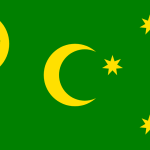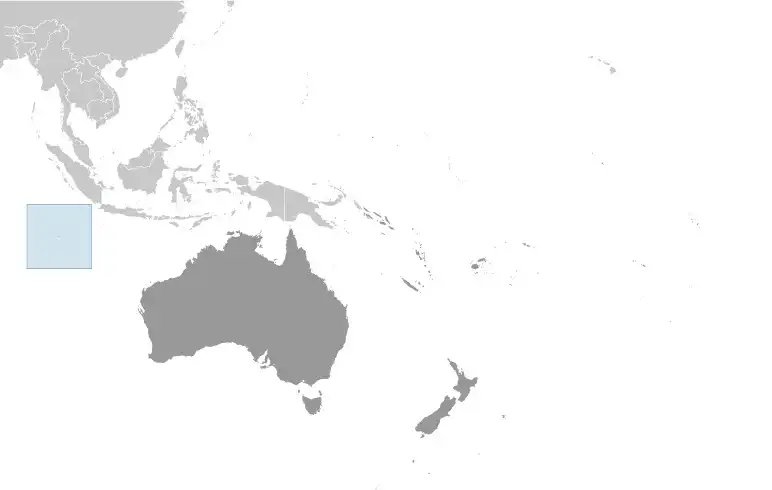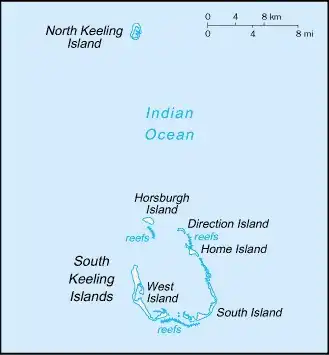
Cocos (Keeling) Islands
Country Data Dashboard

| Government type: | non-self-governing overseas territory of Australia |
| Capital: | West Island |
| Languages: | Malay (Cocos dialect) 68.8%, English 22.3%, unspecified 8.9%; note - data represent language spoken at home (2016 est.) |
People & Society
Ethnicity
Religion (2016 est.)
Age structure
No image available.
Economy
Economic overview
-Real GDP (purchasing power parity) in Billion $
no data
Real GDP per capita in $
No data
Top 5 Import Partner in 2022 (98%)
Top 5 Import Commodities in 2022
- gold 💰
- x-ray equipment
- cars 🚗
- prefabricated buildings 👕🧶
- packaged medicines 💊
Top 5 Export Partner in 2022 (98%)
Top 5 Export Commodities in 2022
- integrated circuits 💻
- vaccines and cultures 💉
- furniture 🛋️
- carbon batteries
- rubber gloves 🧤
Geography
Map

Area
Natural resources
- fish 🐟
Climate
tropical with high humidity, moderated by the southeast trade winds for about nine months of the year
Historical Background Information
British sea captain William KEELING discovered the Cocos (Keeling) Islands in 1609, and they were named for their coconut trees in 1622. Some maps began referring to them as the Keeling Islands in 1703. In 1825, Scottish trader John CLUNIES-ROSS was trying to get to Christmas Island but was blown off course and landed on Cocos (Keeling) Islands. The next year, a British trader hired CLUNIES-ROSS's brother to bring slaves and a harem of Malay women to create the first permanent settlement on the island. By the 1830s, the Clunies-Ross family had firmly established themselves as the leaders of the islands, and they ruled Cocos (Keeling) Islands in a feudal style until 1978.
The UK annexed the islands in 1857 and administered them from Ceylon after 1878 and from Singapore after 1886. The Cocos (Keeling) Islands hosted a cable relaying station and was attacked by the Germans in World War I. The Japanese similarly attacked the islands in World War II. The UK transferred the islands to Australia in 1955, when they were officially named the Cocos (Keeling) Islands, and in 1978, Australia bought all the land held by the Clunies-Ross family, ending their control of the islands. In a referendum in 1984, most islanders voted to integrate with Australia, and Western Australian laws have applied on the islands since 1992.
